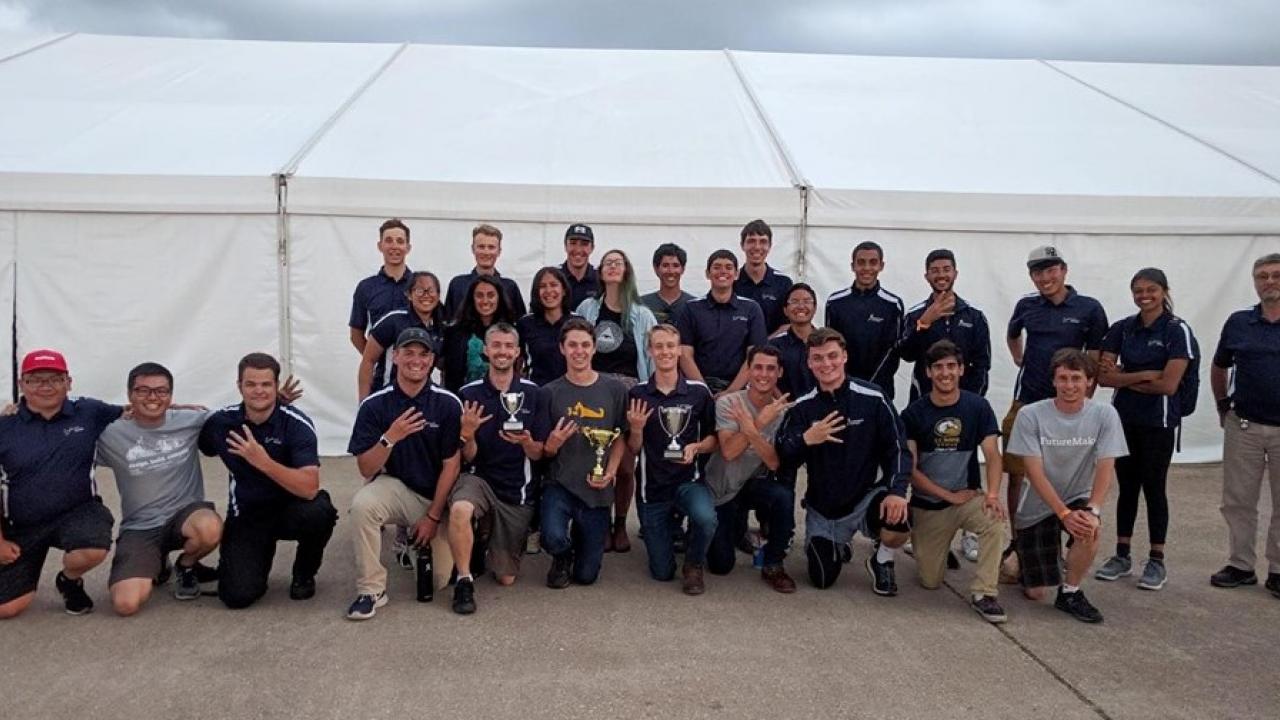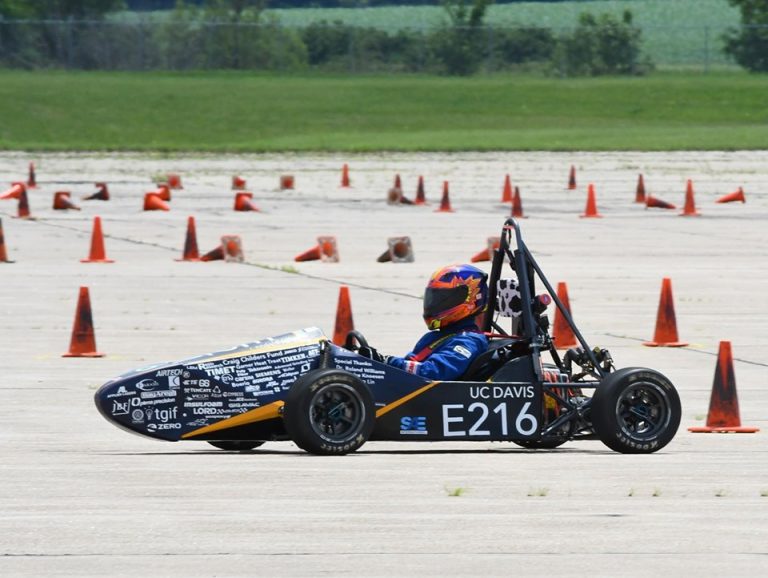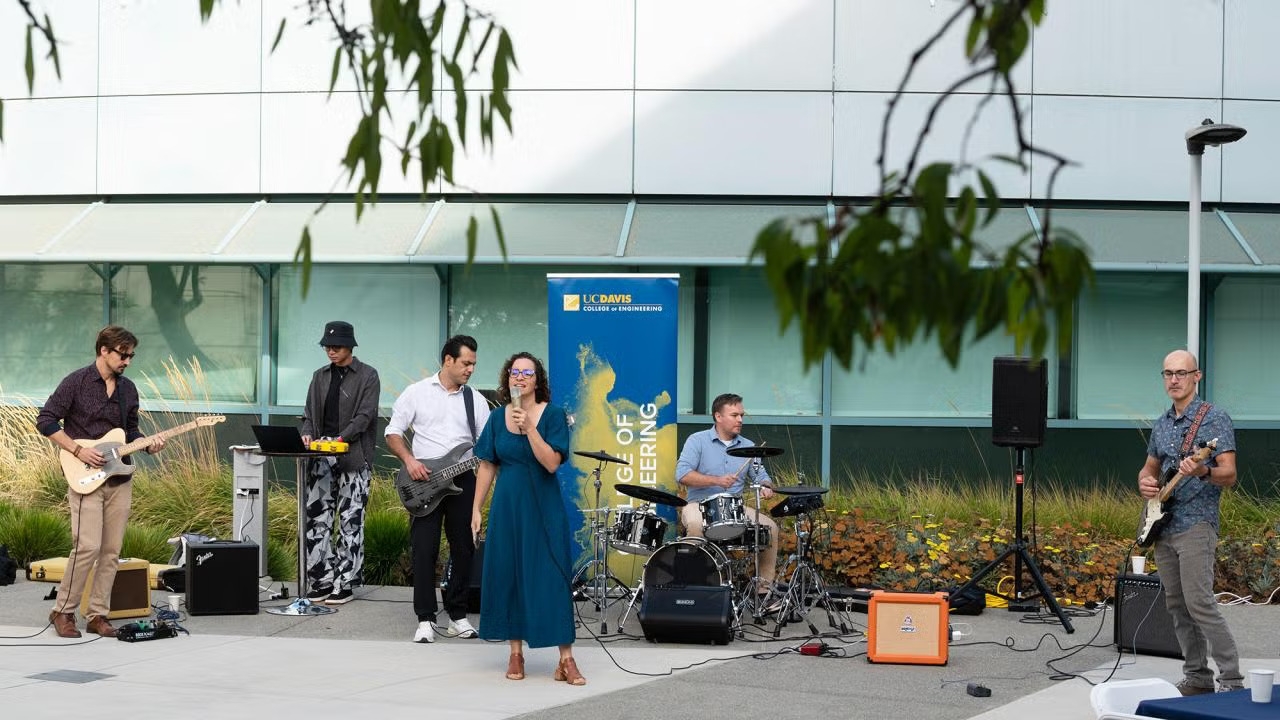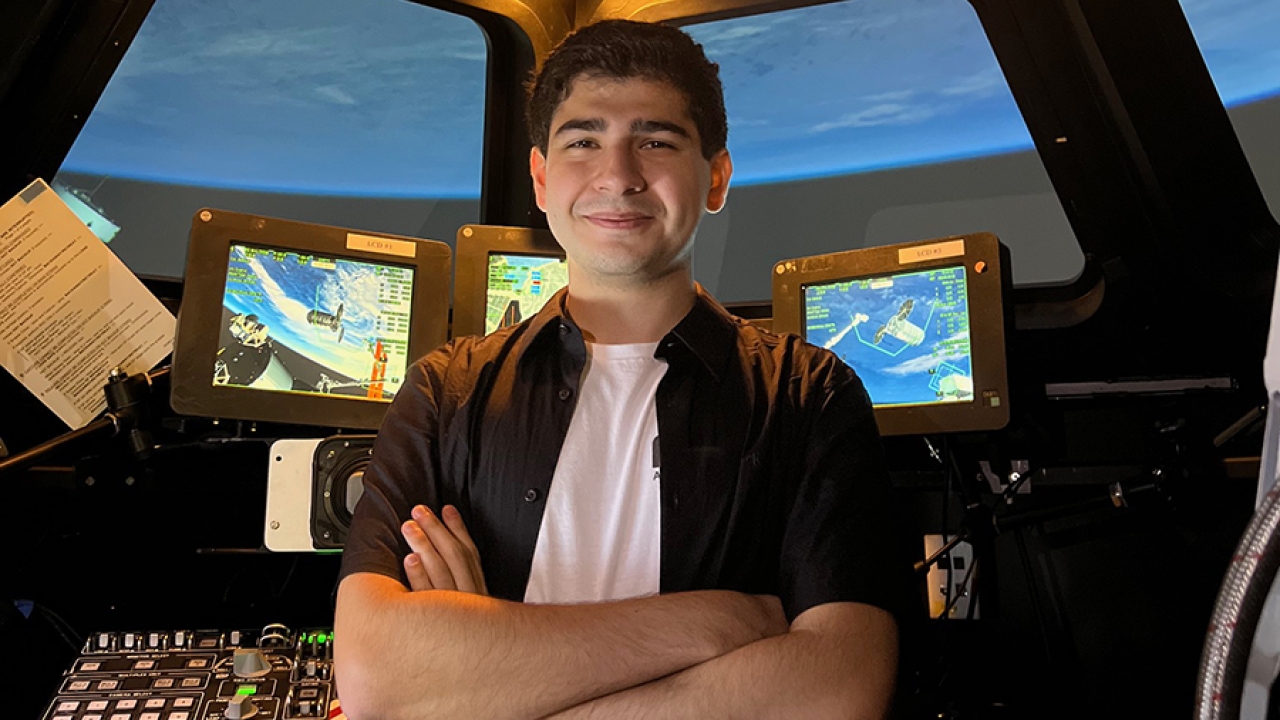
UC Davis Formula Racing team succeeds at 2019 Formula SAE Electric competition
UC Davis Formula Racing’s racecar, FE6, placed second in endurance, second in cost and fourth overall out of 30 teams at this year’s Formula Society of Automotive Engineers (SAE) Electric international competition on June 19-22 in Lincoln, Nebraska.
UC Davis Formula Racing is an engineering student-led research team that is challenged with designing, building and racing a high-performance electric vehicle that complies with the rules annually released through SAE to compete in the annual Formula SAE Electric competition.
Formula SAE Electric is a design and engineering challenge for university students designed and run by the Society of Automotive Engineers. The goal of the competition is to design and build an open-wheel, single-seat, electric racecar conforming to a stringent set of rules, which emphasize drivetrain innovation, safety, and energy efficiency in a high-performance application.

The team prepares for the competition first by making a vehicle that complies with the rules to pass technical inspections when they arrive. All of the team’s cost, design and strategic positioning decisions are made to adhere to those rules. Next, they focus on making a reliable car. The team aims to complete the car weeks, or even months, before the actual event to have enough testing time to ensure their vehicle will last throughout the competition with minimal setbacks.
Most team members put in about 300 to 400 hours over the year, but the team leads can easily contribute between 600 and 800 hours to prepare for this competition, while staying on top of their rigorous coursework and other UC Davis activities. Team membership is open to all UC Davis students, but because it is highly technical, it’s mostly engineers that comprise the team. That said, those interested in the business and design aspects have a big part to play as well; it is one of the most multi-disciplinary activities on campus.
Colton Miles, the team’s manager, joined UC Davis Formula Racing as a first-year student because of his love for cars and his desire to learn more about automotive engineering. He has been heavily involved with the team since then and believes being a part of this team has significantly enriched his personal, social and educational experience at UC Davis.
“Because of the hands-on learning environment and incredible scope of the project, I have developed the skills necessary to successfully apply my engineering knowledge in real-world situations,” said Miles. “A successful Formula SAE program is fundamentally a project management challenge at its core, so I’ve also learned valuable communication and management skills as a result of my efforts to shift the team toward better integration of the engineering and organizational aspects of the team.”
Evan Sousa, the team’s electrical lead, plays a big role on the operational side, along with managing sponsorships and mentoring new team members.
“Looking back at all of the hardships throughout the year and the obstacles we had to overcome in order to have such a great car, everyone on the team would agree that it is the most incredible feeling to have it all come together,” said Sousa.
“We work tirelessly to design, build and test a new race car each year and have a great time doing it. Being part of this team is a significant commitment with substantial rewards, but it’s also like having a second family,” added Miles.
Roland Williams has mentored the team for seven seasons and explains that designing this car is likely the most complex project that many of them will ever work on, given the breadth of skills and knowledge required. Team members are encouraged to work on any aspect of the car that interests them and try to expand their engineering scope beyond just their degree specialty, with the added benefit that, when they graduate, they are highly sought after.
“The hardest thing in trying to mentor a team with such a tremendous range of tasks is to allow them to make the errors that cement the learning. Biting my tongue is difficult, but when you see individuals illuminated by serendipity, that’s beyond gratifying,” said Williams.
Even with limited space and resources, the team works well together and thrives against schools who receive far more funding than they do. This year’s success guarantees the team entry into next year’s competition and they are already excited to start the design process for FE7.
“The best part of this competition is when the team suddenly realize that they are giant-killers, beating teams that have million dollar budgets, and that they have simply out-engineered the competition. This is when all their misery of fixing what’s broken gets forgotten in the sunlight of success and the acclaim and respect of their competitors,” said Williams.




